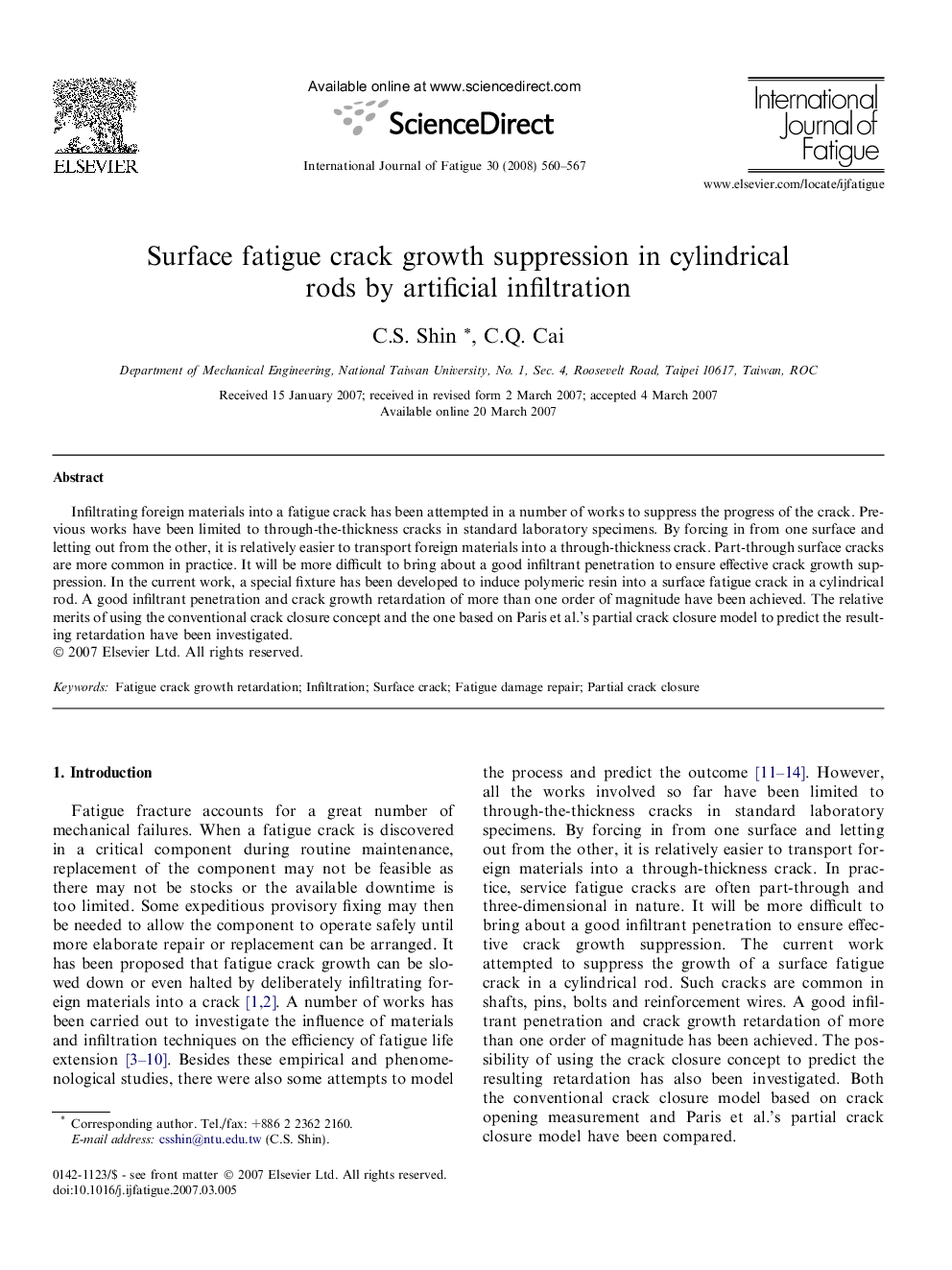| Article ID | Journal | Published Year | Pages | File Type |
|---|---|---|---|---|
| 775840 | International Journal of Fatigue | 2008 | 8 Pages |
Infiltrating foreign materials into a fatigue crack has been attempted in a number of works to suppress the progress of the crack. Previous works have been limited to through-the-thickness cracks in standard laboratory specimens. By forcing in from one surface and letting out from the other, it is relatively easier to transport foreign materials into a through-thickness crack. Part-through surface cracks are more common in practice. It will be more difficult to bring about a good infiltrant penetration to ensure effective crack growth suppression. In the current work, a special fixture has been developed to induce polymeric resin into a surface fatigue crack in a cylindrical rod. A good infiltrant penetration and crack growth retardation of more than one order of magnitude have been achieved. The relative merits of using the conventional crack closure concept and the one based on Paris et al.’s partial crack closure model to predict the resulting retardation have been investigated.
